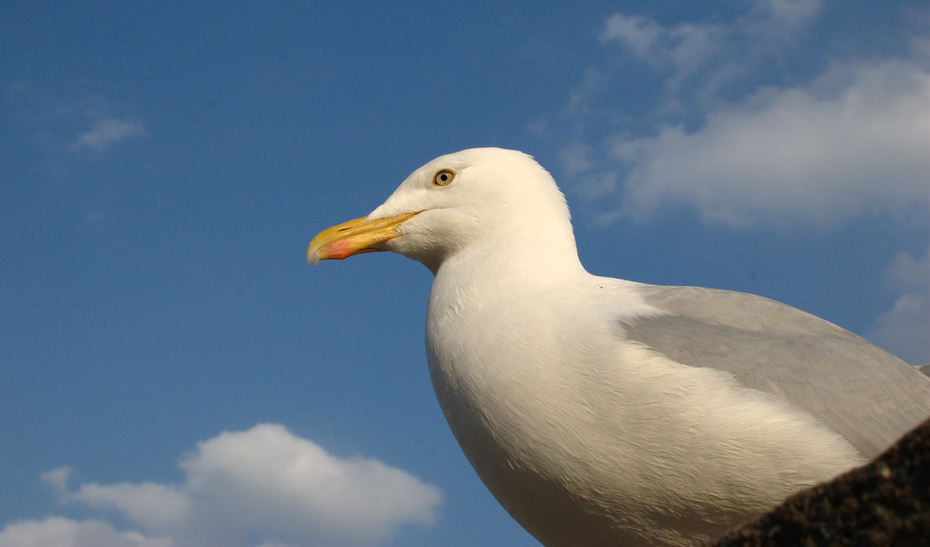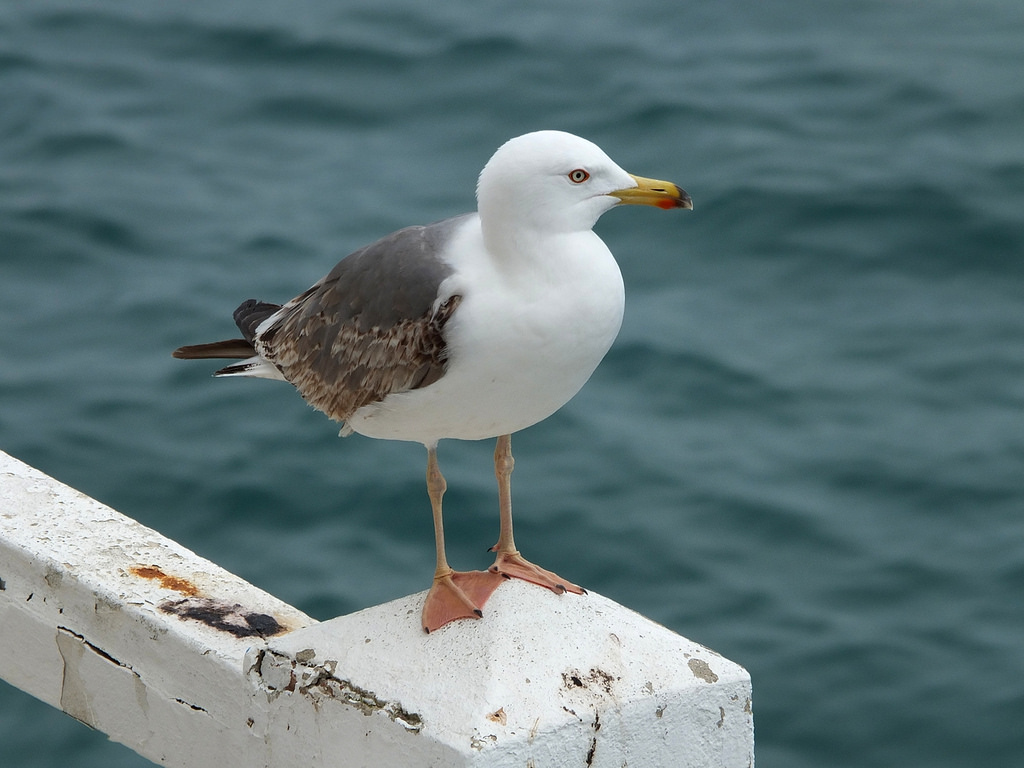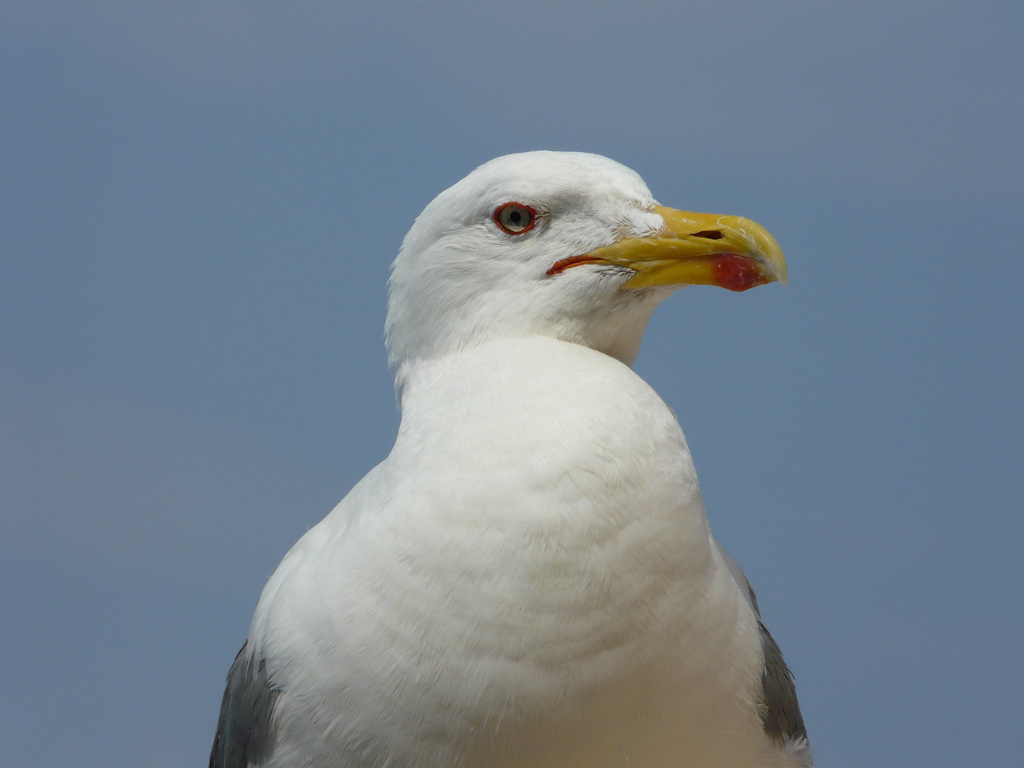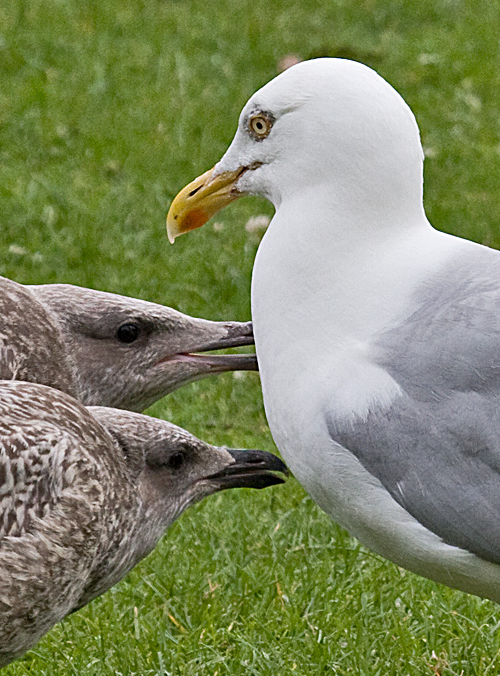
Herring Gull (Photo: mongolito404; Courtesy of BirdNote)
An immature Herring Gull develops its own red spot. (Photo: Brian Henderson)
Mary McCann explains how a tiny red spot on the tip of a Herring Gull’s beak is a visual trigger for gull chicks and scientists — causing the young to feed, and setting off animal behavior experiments that led to a Nobel Prize.
CURWOOD: It’s Living on Earth. I’m Steve Curwood.
[MUSIC: BIRDNOTE® THEME]
CURWOOD: The way animals behave is a constant source of fascination for some observers and an interest for scientists. And as Mary McCann explains in today’s BirdNote®, careful observation can help solve mysteries.
[GULL CALLS]
BIRDNOTE®/GULLS’ BEAKS
http://birdnote.org/show/little-red-spot-gulls-bill
The Little Red Spot on a Gull’s Bill
[Bugling calls of Glaucous-winged Gulls]
MCCANN: You may have noticed – on a trip to the shore or at a waterfront restaurant where gulls gather – that many gulls have a bright red spot near the tip of their otherwise yellow bills.

Herring Gull (Photo: mongolito404; Courtesy of BirdNote)
[BUGLING CALLS OF GULLS]
MCCANN: Behind that red spot lies a considerable tale – that’s t-a-l-e!
MCCANN: In the mid-20th Century, Dutch scientist Niko Tinbergen studied nesting Herring Gulls. He noticed that newly hatched gull chicks were fed by their parents only after they pecked at the adults’ bills
[BEGGING CALLS OF YOUNG GULLS]
MCCANN: Tinbergen devised experiments that varied the shape and coloration of the adult’s bill. It became clear that the red spot on the adult gull’s bill was a crucial visual cue in a chick’s demands to be fed, and thus its survival.

A mature Herring Gull looks out over the water. (Photo: Timelapsed; Courtesy of BirdNote)
[BEGGING CALLS OF YOUNG GULLS]
MCCANN: Tinbergen also made the case that the chick’s attraction to the red spot on the bill was instinctive. This conclusion came at a time when there was furious debate among experts about whether such behavior was learned or innate.
MCCANN: Tinbergen’s gull research helped lay the groundwork for the science of animal behavior, and in 1973 earned him a Nobel Prize. And it all started with that little red spot.

An adult Herring Gull displays its iconic red spot. (Photo: roamingwab; Courtesy of BirdNote)
[BEGGING CALLS OF YOUNG GULLS]
MCCANN: I’m Mary McCann.
###
Written by Bob Sundstrom
Bird audio provided by The Macaulay Library at the Cornell Lab of Ornithology, Ithaca, New York. Calls of Glaucous-winged Gulls recorded by A.A. Allen. Begging call of Glaucous-winged Gulls recorded by E.S. Booth. Herring Gulls recorded by Martha Fischer.
Producer: John Kessler
Executive Producer: Dominic Black
© 2014 Tune In to Nature.org October 2014 Narrator: Mary McCann

Herring Gull chicks peck at an adult in the hopes of a meal. (Photo: Tony Morris; Courtesy of BirdNote)
CURWOOD: You’ll find photographs of gulls – and their red spots - at our website, LOE.org.
[BEGGING CALLS OF YOUNG GULLS]
Links http://birdnote.org/show/little-red-spot-gulls-bill - Learn more about Herring Gulls and Tinbergen’s research on BirdNote’s website http://www.loe.org/shows/segments.html?programID=14-P13-00037&segmentID=7 - Listen to another BirdNote from McCann on the Bushtit, a tiny songbird.